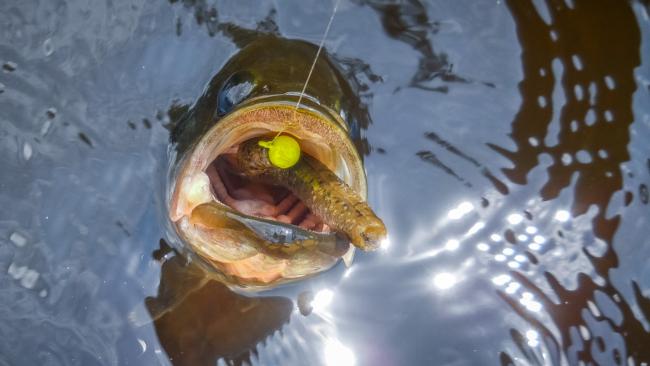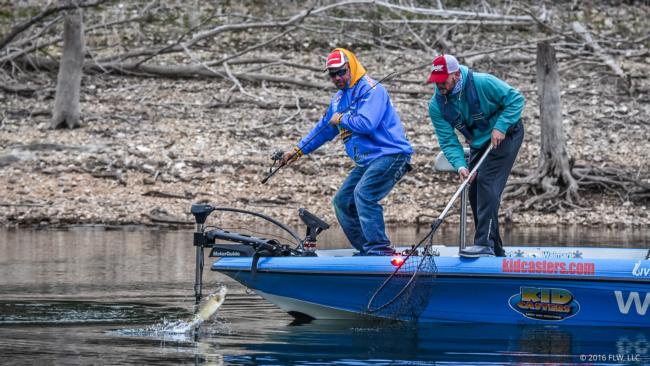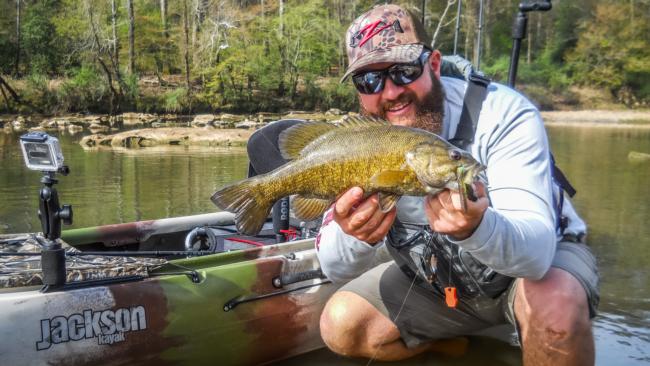Break Out the Ned Rig for Finicky Fish
Originally a Midwestern technique, this subtle bait is now attracting attention in tournament circles everywhere.
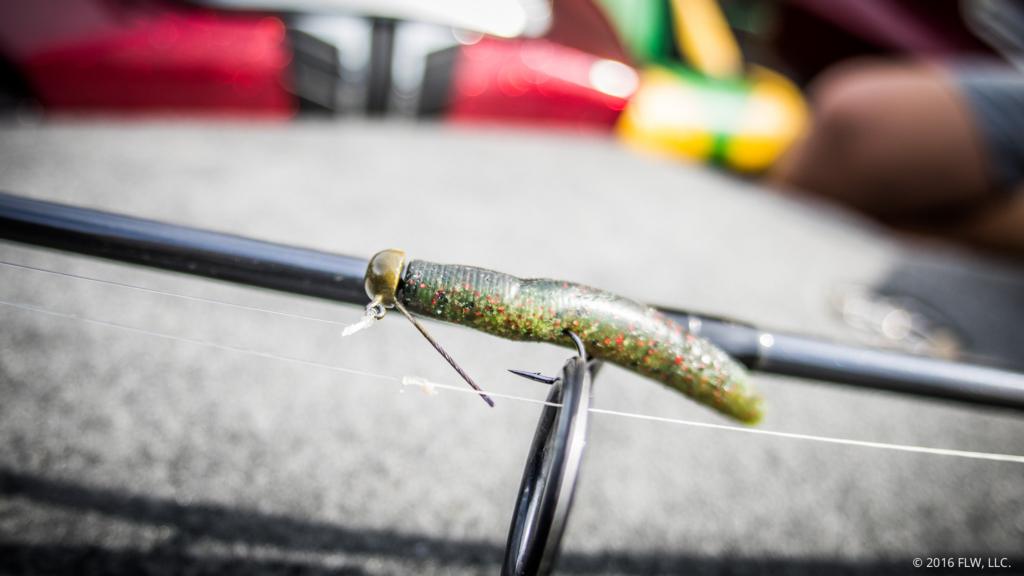
Hang around Ozark bass fishing circles much, and you’ll hear about a finesse technique that goes by a few enigmatic names such as “the Little Guy” and “the Varmint.” Most anglers know what you’re talking about when you call it the “Ned Rig,” however.
A small bobtailed plastic worm rigged to what is usually a mushroom-shaped head – though it’s nothing much to look at, the Ned Rig is a lure that catches bass and sometimes lots of them. Longtime pro Stacey King of Reeds Spring, Mo., has come to rely on it when subtle presentations are called for.
“I’ve been fishing it [the Ned Rig] for maybe six years after Ned Kehde and another Kansas bass guy introduced me to it,” says King.
Kehde is an outdoor writer who’s largely responsible for popularizing both the style of fishing he calls “Midwest finesse” and the lures most often used for it. He has been writing about fishing since the 1980s and has documented the growth of Midwestern finesse from its origins near Kansas City in the 1950s. He even guided for a bit on Table Rock Lake, where Guido Hibdon was one of his mentors. While Kehde disavows and won’t use the term “Ned Rig,” that name was coined by anglers because of his promotion of the style of fishing it embodies.
The rig itself is nothing complicated: mainly a small, light mushroom-shaped jighead paired with half of a soft-plastic stick bait such as a YUM Dinger or a bait made expressly for it. The head’s weight usually varies from 1/32 ounce to 1/8 ounce. The back of the head fits flush against the blunt end of the stick bait, and a touch of Super Glue anchors it.
“That little worm,” says King, “is the key, I think. It’s so subtle that bass simply can’t resist it.”
He adds that the Ned Rig is an ideal lure for co-anglers or others who fish from the back of a boat.
“The guy up front most likely will be using something different, and the Ned Rig is a great follow-up bait,” notes King.
While the Ned Rig is sometimes mistakenly thought of as a small-fish approach, it also catches big bass and enough keepers to build confidence when fishing is especially tough.
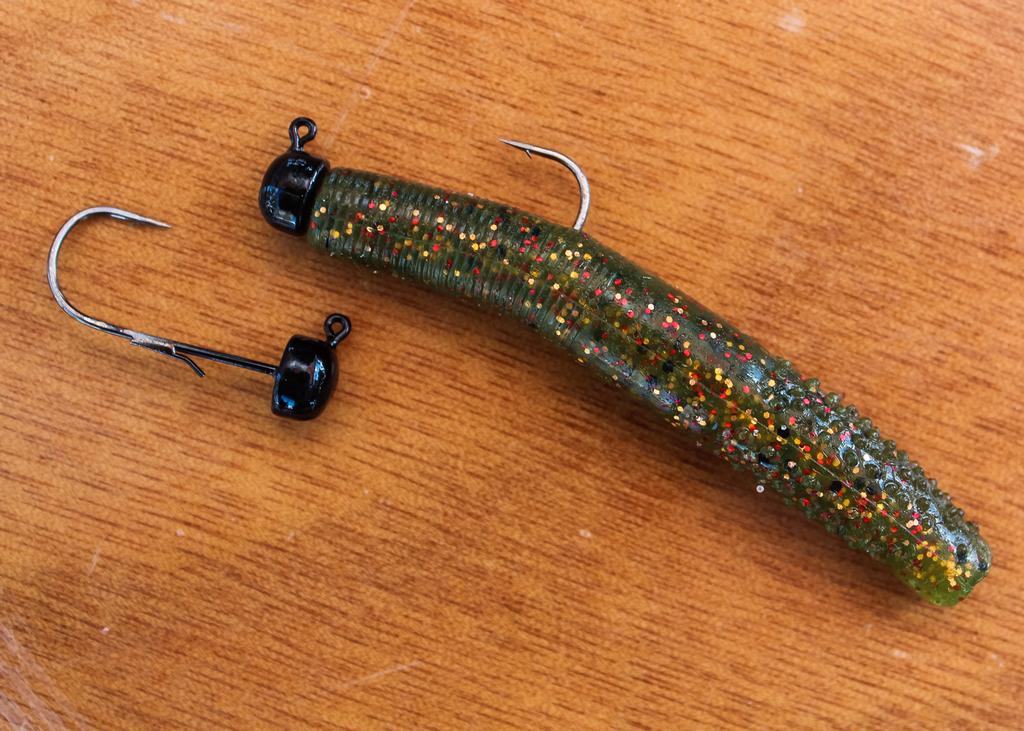
Tackle Tips
Because the Ned Rig is essentially a finesse bait, King uses light gear to fish it. He prefers 10-pound-test Bass Pro XPS 8 braid in yellow and ties on a 6-foot leader of fluorocarbon in either 6- or 8-pound test, depending on where he’s fishing and the size of the bass he’s likely to encounter.
The key to success with the Ned Rig is to fish it slowly and let bass show their preference as far as what sort of retrieve they prefer. Sometimes no retrieve is fine with them. This isn’t power fishing by any stretch.
Given the increasing interest in fishing the Ned Rig, manufacturers are stepping up and making gear specifically for this method. Prescription Plastics of Lansing, Kan. (913.240.1244 or [email protected]), makes standard and weedguard heads in 1/16 and 1/8 ounce.
The rig originally was a non-spinner variation of the venerable stubby-bodied Beetle Spin, but components since have evolved to include Gopher Tackle Mushroom Head Jigs and body styles of different shapes and lengths. Like the YUM Dinger, the Strike King Ocho stick bait or a Z-Man ZinkerZ cut in half have been Ned Rig staples. Of course, half of a Yamamoto Senko works just as well. Last year, Z-Man introduced The Real Deal, or TRD, to its line of ElaZtech baits. It’s a pint-sized soft stick bait made for the Ned Rig. The LeechZ and Finesse ShadZ also work well, and Z-Man now offers a series of Finesse ShroomZ heads with wire keepers on the shank that eliminate the need for glue.
Light spinning tackle usually is paired with the Ned Rig, and the approach has become so popular that Lew’s recently introduced its TP167MLFS Ned Rig rod, a 6-foot, 7-inch, medium-light rod designed specifically for this style of fishing.
Where Ned Shines
Taking a little piece of plastic, whether it’s a TRD, half an Ocho, a 3-inch Dinger or one of the slightly different bodies (Z-Man’s Hula StickZ for example) and using it takes a different mind-set. The Ned Rig is a finesse method, but it often works where you would expect power techniques to rule. It’s a good choice for a follow-up when a bass misses a buzz bait or spinnerbait, for example.
However, it really shines when fishing a “do-nothing” bank. You know the kind – it’s where there’s no cover to speak of. It might be close to a boat dock or a laydown, and the bottom is gravel, chunk rock or mud. It’s the place you’ll spot shad lazing about or shiners searching for lunch. Crawdads live there under rocks or in the debris. It’s also the kind of bank where bass are easily spooked because of the lack of cover in which to hide, but they’re there to hunt the shad or shiner or crawdad. It’s the kind of bank made for long casts and stealthy presentations.
The Ned Rig is best fished slowly. Cast it out and let it settle to the bottom. If a fish doesn’t grab it as it falls through the water column, let it sit for a bit. Then use a pull-and-drop retrieve, letting it hit the bottom after each pull. Or slowly swim it back to the boat, or shake it in place. The movement of the rod and boat, and perhaps wind and current, often provide enough action to get a bite.
While it might seem that the Ned Rig is a silver bullet, it has limitations. The light weight of the head renders it difficult to fish in deep water unless the angler has a lot of patience and there’s no current or wind to speak of. Also, the small hooks necessary for proper bait movement aren’t designed to horse bass out of heavy grass or wood cover – though it works well on the outside edges of weeds or near laydowns.
The only real problem is that the Ned Rig catches lots of small bass; the good news is that it catches a lot of large bass too.
